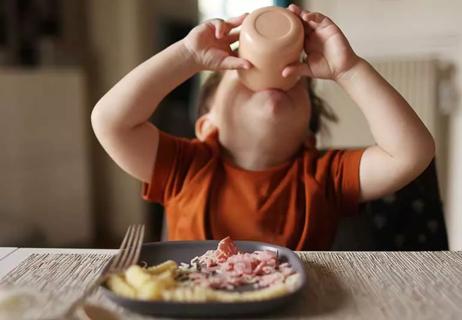
A balanced and nutritious diet for your child is important for so many different reasons. Sure, food nourishes the body and provides energy to grow and explore, but learning what to eat (plus when and how much) is an important aspect of developing and reaching milestones.
Cleveland Clinic is a non-profit academic medical center. Advertising on our site helps support our mission. We do not endorse non-Cleveland Clinic products or services. Policy
Nutrition during preschool years is an opportunity for parents to teach kids about healthy food options, plus it helps prepare kids for the next big step: kindergarten.
Pediatric dietitian Jennifer Hyland, RD, CSP, LD, shares some suggestions for good nutrition during preschool years, ages 4 to 5 and how to raise a healthy eater.
By the time your child reaches preschool, they should be (for the most part) able to feed themselves. Your child should be eating from each of the food groups: grains, vegetables, fruits, milk and meat.
As a parent, it’s important to always offer different choices for your child to eat and to set a good example of healthy eating. Offer your child new textures, colors and tastes to keep food appealing and fun.
Your job is to decide what foods are offered and when and where they are eaten. Plan regular meals and snacks and make sure to give your child enough time to eat. Let your child decide which of the foods offered they will eat and how much to eat.
“Day-to-day and meal-to-meal appetite changes are normal, so try not to get too hung up on that,” says Hyland. “It’s important that you don’t make your child clean his or her plate at every meal. What’s most important is to offer food on a schedule and try to stick to that.”
Generally, a preschooler should be eating between 1,200 and 1,600 calories per day. However, this will vary based on gender, weight and height, as well as activity level. Parents should discuss overall calories with a doctor or registered dietitian.
“I do not generally recommend counting calories for children, rather focusing on offering a varied diet and instilling positive eating behaviors overall,” says Hyland.
About 6 servings each day.
At least 5 servings each day (2 fruit and 3 vegetable).
About 3 servings each day.
2 to 3 servings each day.
3 to 4 servings each day.
Added sugars: The goal should always be as little added sugars as possible
It’s important to be careful with foods that can cause choking.
Hyland recommends avoiding:
Always cut up foods into small pieces and watch your child while they eat.
Also, your child may have some food allergies, so it’s important to keep tabs on what they’re eating, how much and how they react to it. The most common food allergies are milk, eggs, peanuts, soybeans, wheat, fish and shellfish.
If you think your child might have a food allergy, talk with your doctor to be sure.
It can be tough when you’ve got a picky eater on your hands, especially if they’re preschool age. Parents should be mindful about offering kids new foods one at a time, and remember that children may need to try a new food 10 or more times before they accept it!
Continue to offer the food on your child’s plate when it’s served at a meal, even if they have tried it in the past. It may only be a matter of time before they try again and decide to like it.
Here are more tips for managing a young picky eater:
It’s important to talk with a registered dietitian or your doctor about your child’s weight to decide if they really are gaining too much. Also, keep in mind that often a child will gain weight before a growth spurt.
Here are a few tips to help prevent too much weight gain:
Keep this things in mind as you continue to work with your preschooler and teach them about healthy eating:
Learn more about our editorial process.

When breastfeeding doesn’t go as planned, you may need to supplement with formula or donor breast milk — and that’s OK

Look for snacks that are low in sugar and high in fiber, protein and healthy fats

No amount of caffeine is safe for kids under 12, and kids 12 to 17 should be cautious about how much they consume

They aren’t unhealthy, but they’re probably a waste of money

Tiny kidneys and tiny tummies don’t mix well with water

Vomiting and fevers are a hard no — other symptoms are a judgment call

If your child is nervous or apprehensive about school, communication is key

Turn down the pressure, but don't stop offering

Your metabolism may torch 1,300 to 2,000 calories daily with no activity

A gentle touch in all the right places may help drain your sinuses